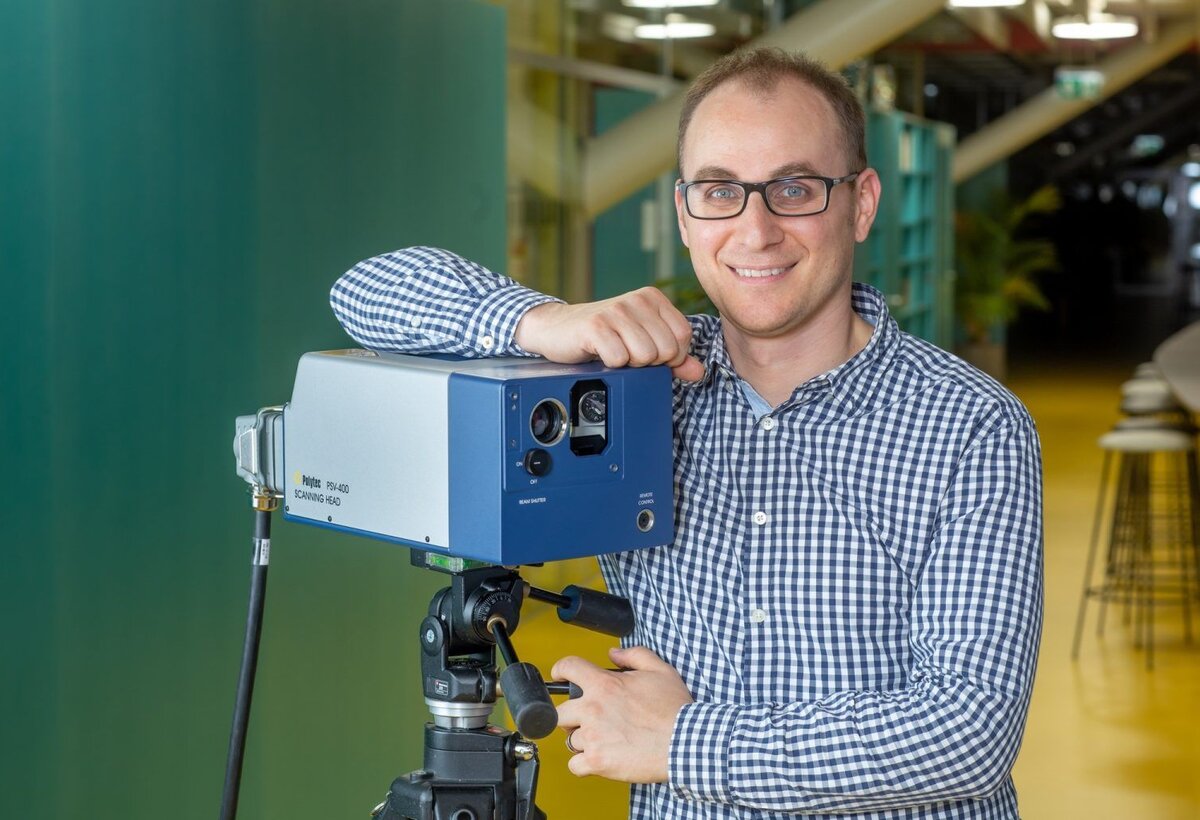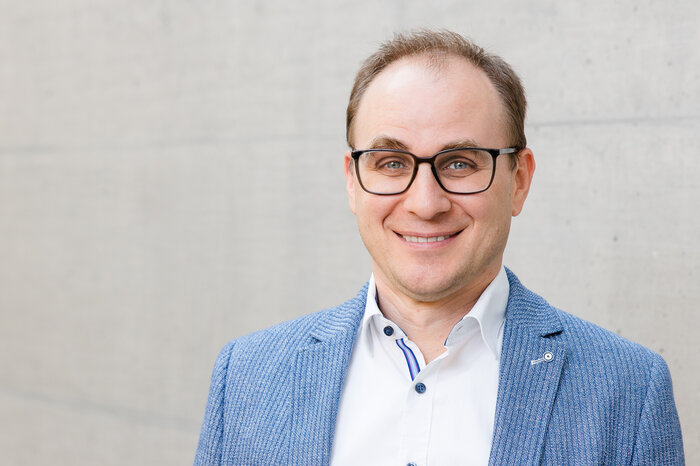Fadi Dohnal, head of the research centre for microtechnology, in conversation
Fadi Dohnal has turned his life upside down for his job as head of the microtechnology research centre at the FHV. After many years abroad - including as a visiting professor in Japan - and stints in Austria, the UK and Germany, he has now landed in Vorarlberg with bold ideas for the future.

Fadi, what skills do you bring to the FHV?
Through my academic education and professional career, I combine Physics and Mechanical Engineering, or the natural sciences with engineering knowledge. This intertwining plays ideally into the field of microtechnology. I have always been fascinated and driven by the exploration of unknown technical and physical relationships. It is important to me that new findings do not just end up in publications or even disappear in a drawer, but are incorporated into concrete processes or products. I would like to anchor this mindset in the team in the long term.
That's application-oriented research par excellence?
Nothing works without basic research! But only basic research does not get us anywhere either. The mixture makes it. Applied to our research centre, this means: building on experience, we can do many things very well and precisely. With the help of theoretical simulations, we gain a deeper understanding of the physical influencing parameters. In this way, we arrive at particularly efficient, robust or compact designs instead of just proceeding according to the trial-and-error principle. This kind of application-oriented basic research enables us to create real innovations in applications.
What distinguishes research at the FHV from your point of view?
A clear structure and framework under which you can do good research. I have here top-qualified people, also the necessary creative space to build young junior scientists:inside. In Vorarlberg, I particularly like the close cooperation with companies throughout the region. This networking has high innovative power.
Do you have concrete plans for the research centre?
I would like to profile our service portfolio and in the future also offer modeling and simulation for companies and our long-term research partners:in. Without question, we are very good in the manufacture of components, there we can compete internationally. By expanding our activities to include modeling and simulation, we will be able to serve the interface between engineering science and physics even better and offer companies a full-fledged portfolio.
What do you see as the success factors for good research?
My three principles are: Excellence, Quality and Trust. Then success comes (almost) by itself. In the cooperation with partners, I rely on eye level. We don't just want to be a service provider or supplier, but work together as partners and communicate openly. Everyone has his or her part to play. This type of collaboration has the highest innovative power.
Which project are you going to tackle in the near future?
We are currently working on several topics. We have strong expertise in both photonics and surface structuring using short-pulse lasers. There are many intersections with international partners. We will be hearing a lot more about this. I am currently working intensively on a proposal for a Josef Ressel Center on the topic of engineered dynamics. The search for partners and concrete talks with companies are already underway. In this Josef Ressel Center, we want to research non-linear phenomena in dynamics. One example would be the design of a soundproof wall. We are familiar with these thick walls made of special noise-absorbing materials. But you can also make such walls out of very thin panels that are designed with metastructures in such a way that they save space and are still effective. In other words, one can design so-called acoustic black holes that swallow sound. The interesting thing is that the principle of these metastructures works the same for macroscopic and microscopic structures. Areas of application would be noise or vibrations in road and rail traffic, power plant construction or, for example, rotor blades for wind turbines or microscopic MEMS.
Universities of Applied Sciences often emphasize close collaboration between research and teaching, does this also apply to the FHV?
We can definitely link teaching and research even better. Here, too, I bring me with the research centre microtechnology innovative. We have just submitted a COIN application with the Department of Engineering and Technology. We want to work together on so-called Deep Edge Labs. Our research centre will provide the sensor technology and the department will provide the engineering services. The aim is to develop labs-on-a-chip, i.e. laboratories in handheld format, for example for medical applications or the measurement and evaluation of environmental data. There are already many activities and projects for this internationally, but hardly any real products. This is where we as FHV can make our contribution.
About the person
Fadi Dohnal studied Mechanical Engineering and Physics at the Vienna University of Technology. He lived and worked abroad for ten years, including in Japan, England and Switzerland. The 44-year-old has worked in science, but also in industry. Currently, 14 Mitarbeiter:innen work in the research centre microtechnology on the focal points of microtechnical sensors and actuators, photonic applications and dynamics.
Contact
October 2022





